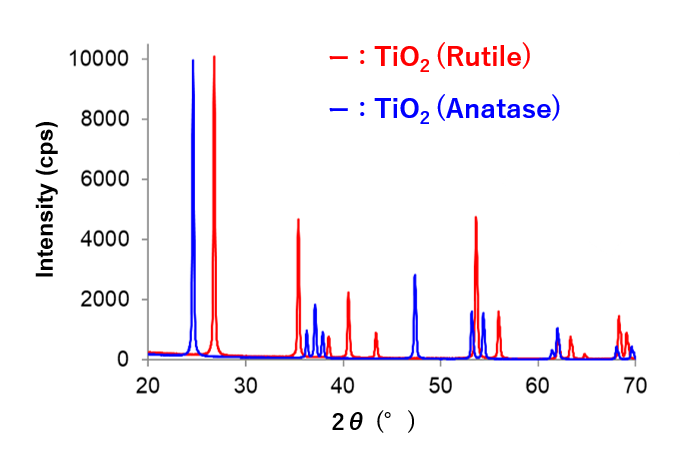What Is Powder X-ray Diffraction?
Powder X-ray diffraction (PXRD) is an important method for analyzing the crystal structure of a substance. The sample to be analyzed is a powder or bulk polycrystalline material. X-rays are irradiated onto a sample with a flat surface, and the diffraction pattern obtained is analyzed. This pattern allows this information to be determined
- What the substance is (qualitative analysis)
- How much of each component the sample contains t (quantitative analysis using the diffraction peak intensities)
- The crystal state (crystallinity, crystallite size, etc.) determined from the width of the diffraction peaks.
Bragg's diffraction conditions
The basis of powder X-ray diffraction is the Bragg diffraction condition. This defines the conditions under which diffraction occurs, based on the lattice plane spacing of the crystal and the X-ray wavelength. Specifically, it is expressed by the following formula:
nλ = 2d sin(θ).
This formula is the condition necessary for X-rays to be reflected at each crystal lattice plane and for the interference to be constructive (to obtain diffraction peaks). There are various d values in a crystal, and even for a single-phase substance, there are multiple diffraction angles 2θ. Also, if the crystal planes in the sample are oriented in random directions, the relative intensities between diffraction peaks will be defined by the substance. The crystal structure can be elucidated from the 2θ position (d value) and relative intensity of the diffraction pattern.
Preparation and measurement methods for powder samples in powder X-ray diffraction
In powder X-ray diffraction measurements, if the powder particles are coarse, they should be ground to around 10 μm using an agate mortar and grinder. The powder sample is packed into a sample plate with grooves carved into it, or pressed into the sample plate. The detector measures the intensity of the diffracted X-rays while the incidence angle of the X-rays on the sample surface is changed, and records the relationship between the diffraction angle 2θ and the intensity.

Rigaku recommends the following products

Contact Us
Whether you're interested in getting a quote, want a demo, need technical support, or simply have a question, we're here to help.
